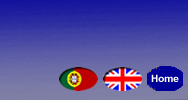Experiments have been carried out on the JET tokamak to investigate fast 3He
and hydrogen minority ion populations accelerated by ion cyclotron range
of frequencies (ICRF) waves launched with multiple frequencies (i.e. up to
four frequencies separated by up to ≈15%). This ‘polychromatic’ heating is
compared with single-frequency, ‘monochromatic’, ICRF heating of reference
discharges with similar power levels. Information on the fast ion populations
is provided by two-dimensional gamma-ray emission tomography and the
measurements are compared with numerical modelling. Polychromatic heating
with resonances in the plasma centre (Rres ≈ R0) and on the low magnetic-field
side (LFS) (Rres > R0) is found to produce predominantly high-energy standardtrapped ions, while resonances on the high magnetic-field side (Rres < R0)
increase the fraction of high-energy passing ions. Monochromatic heating
with a central resonance produces stronger gamma-ray emission with the
maximum emission in the midplane close to, and on the LFS of, the resonance,
in agreement with the calculated radial distribution of fast ion orbits. Both
the fast ion tail temperature and energy content are found to be lower with
polychromatic waves. Polychromatic ICRF heating has the advantage of producing smaller-amplitude and shorter-period sawteeth, consistent with a
lower fast ion pressure inside the q = 1 surface, and higher ion to electron
temperature ratios. |



